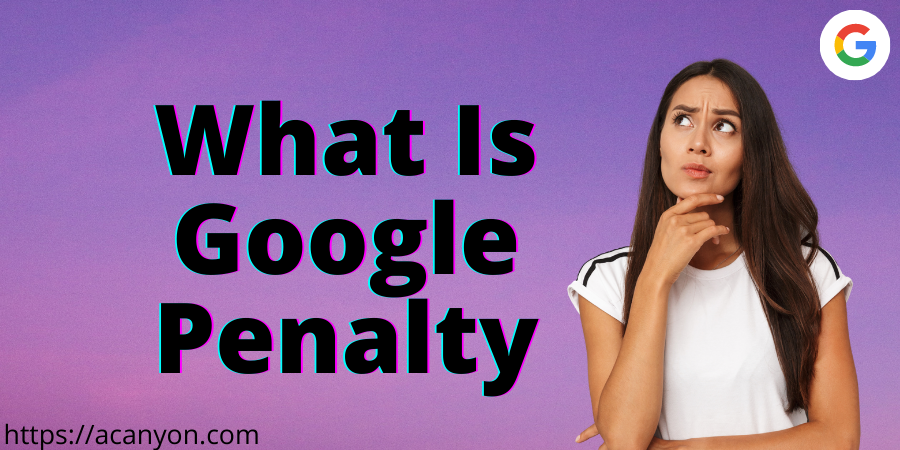
A Google Penalty is like a punishment given to a website. Google hands it out to those websites which may have defied the marketing practices or guidelines enforced by Google.
Sometimes, a penalty can also be given after an update to their ranking algorithm. Or it can also come after a manual review where Google suspects that a website may be using black hat SEO strategies.

If you are new to SEO, it’s easy to mistake an algorithm update for a Google penalty. Algorithms mainly rely on a set of calculations and rules to make sure they deliver the desired outcome.
What Do You Get Google Penalties For?
In this section, let’s take a look at some of the common penalties that strike websites. Of course, there are other penalties too. But here we are only looking at the common ones.
Unnatural Links:
Google sees backlinks as a way of measuring the quality of your website and its content. If Google suspects that a link looks like it was paid or like it’s a part of a link scheme, you are in trouble.
Examples of unnatural links include:
- Low-quality, hidden, or keyword-rich links that are embedded in a site’s widgets.
- Links in the templates or footers of various websites
- Optimized links included in a forum’s comments or signature
- Text advertisements that can pass Page Rank
In such cases, Google may not count the linking value at all and they may even hit you with a penalty. Mostly, this penalty will be placed on certain pages if the issue is localized. Only sometimes, they give a site-wide penalty.
Low-Quality or Duplicate Content:
Google wants to give its users the best experience. If your content isn’t providing them with any value, you can expect a Google penalty.
Low-quality or duplicate content includes:
- Content that is automatically generated
- Doorway Pages
- Scraped content
- Guest posts that are low-quality
- Thin affiliate pages
This penalty can have a significant impact on your search traffic. For this penalty, Google shows a manual action with the following message, “Thin content with little or no added value.”
In some cases, it may be unavoidable or even necessary to use duplicate content. For instance, if you are writing an article that includes quotes or lyrics of a song, you will have duplicate content.
Google Penalty Recovery
Finding the Problem
The first step for Google penalty recovery is to understand the cause of your Google penalty. Only then can you move on with the recovery process. You need to determine if it was caused by a manual penalty or when an algorithm trigger happened.
You may notice that your traffic dropped suddenly. In such a case, you first need to figure out the reason for the loss of traffic. For each cause, there is a different Google penalty recovery method.
Conclusion On Google Penalty
No webmaster wants to face a Google penalty. But if for some reason, you are hit with a penalty, there is hope for recovery. The recovery process is tedious but it can help you improve your site’s reputation and search engine rankings.
For Google penalty recovery, you need to get rid of your bad backlinks and remove your duplicate content. In addition to this, you need to make sure that you are not uploading any low-quality content and doing anchor text distribution well.
